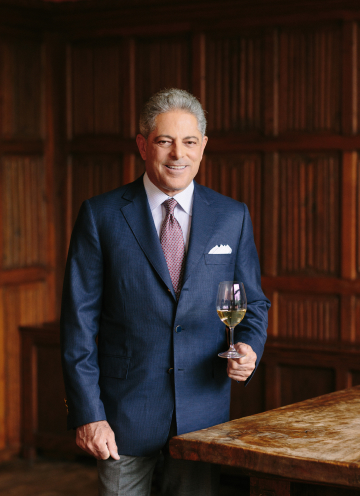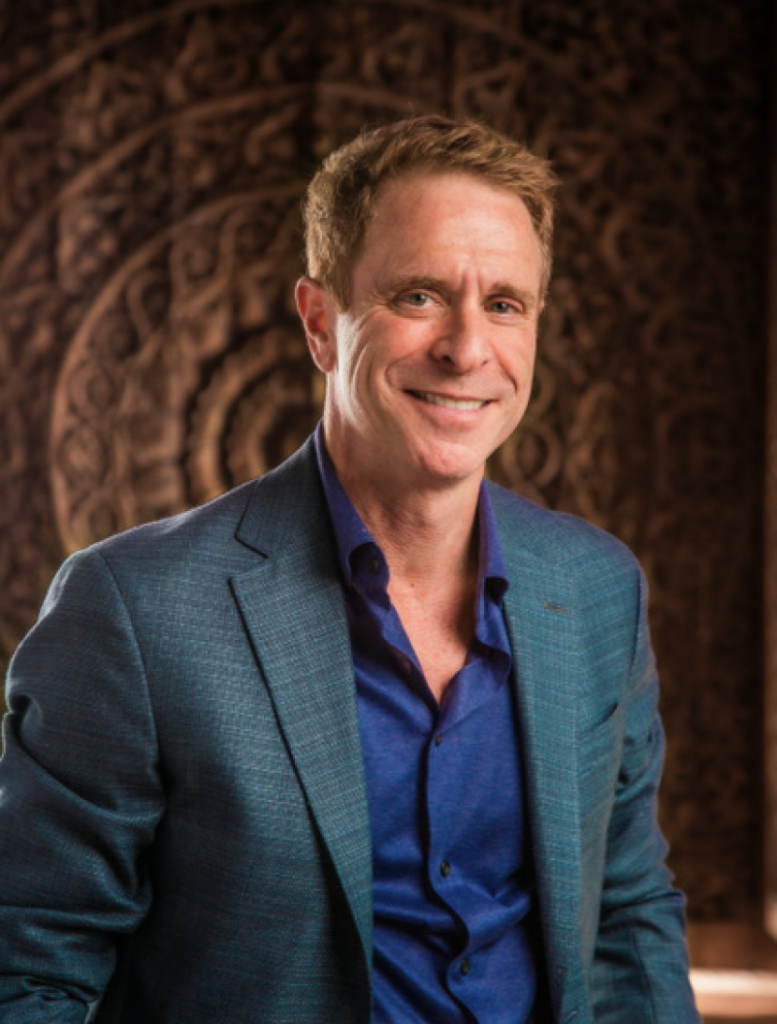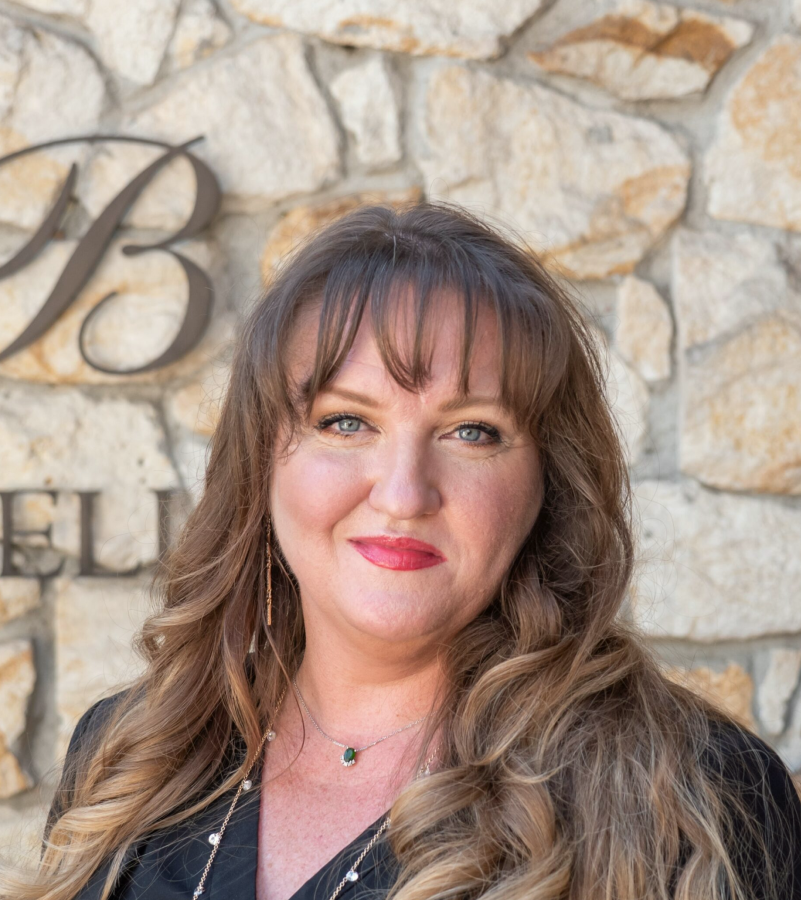"We like being in that super-premium and ultra-premium space and really trying to create products that have a point of difference.”
Could you start by giving us a brief introduction or overview and also milestones that the company has had in the last decade?
Sure. Well, our family is now four generations in the wine industry. It started 85 years ago. Both of my grandparents had a single retail shop and a wine shop in Chicago, two separate businesses. From there, we went from having retail shops too in the forties. My one grandfather started a small distribution business, which my father later joined.
In the sixties, we started importing Italian wine. In the eighties, when I joined the business, we started importing wines from other countries and then also marketing California wines. After I became a CEO in the nineties, we started buying wineries, developing vineyards, and owning the brands. So, it’s a very unusual migration up the food chain.
We sold the retail businesses in the seventies. We sold the distribution business in the early 2000s to focus on owning the brands and marketing lines for other businesses as well. One of the things that we understood is that the closer we were to the source, the larger the marketplace for our wines and the more control over the quality and over our own destiny. You know, when we had a retail store, your customers were a couple of miles in every direction. As a distributor in Illinois, it was the whole state; as an importer, it was the country; as a producer, we can sell all over the world. And we sell our brands in about 39 different countries around the world now.
We also understood that we were building and creating important brands for other people and families. We realized that we should use our efforts to do the same for ourselves and for future generations of our family as well.
That’s a very compelling answer. I would like to ask as well what you think are the main factors or strategies that have contributed to this success.
I think we have a long-term perspective. We look at the business in terms of 10-year cycles. I’ve seen four 10-year cycles in my career. And every 10 years, you get 2 or 3 years, which are really great; 4 or 5 years, which are kind of average; and 2 or 3 years, which are very challenging and difficult.
And what I’ve observed is that when things are good, everybody thinks it’s going to last that way forever. But it doesn’t. And when things are bad, they think it’s never going to get any better, but it does. So, you have to be prepared to get through the bad cycles and also understand when things are good, you have to be prepared for the fact that not everything grows in a straight line. You know, growth comes staggered through the years. So, understanding and looking at the long-term and focusing on quality is important.
We work only with family-owned businesses, not public companies. We work with family-owned partners who also have succession plans for their younger family members. I think the best thing we do is solve problems and overcome adversity.
It’s actually very interesting. I used to be an international correspondent based in Asia, and Japan was one of the countries I covered. The Japanese don’t plan for the next quarter; they plan for the next 25 years. So, I can see a lot of similarities. Also, when it comes to Japan, it’s very hard to do business with them. They stick to Japanese family businesses. So, it’s very similar.
Yeah, there’s no question. When we think of the success of a brand, we make decisions allowing success to be measured in decades, not in years or even quarters, which is what gets done in a lot of the public companies, you know, just to make numbers. I think if you focus on the long term, you make better decisions.
We actually work with a Japanese company. We represent a sake in our portfolio as well. I appreciate your comments because we were looking to have that in our representation, and it took us about 5 or 6 years of continuous meetings with the people we wanted to work with before they became comfortable with our philosophy.
Right, I understand. That leads me to my next question. Could you tell us a little bit more about your global portfolio?
Sure, I think the portfolio, given our distributor background, we always thought in terms of what a good retail store selection and wine list look like. So, it has different regions, different styles, different variables, different price points, and different flavor profiles. So, for someone going in there, there’s a variety of things that they can choose from, and a wide variety of options, more or less a wine for every occasion. That’s what we think a great wine list provides, and we want our portfolio to provide that as well.
Focusing on the long term, we really don’t chase trends. Trends and fads come and go. We try to look at things that will last for decades. So, we focus on wines that enhance meals because we think that the wine business is driven by a food culture. One of the reasons the United States grew in wines, probably starting in the eighties and nineties, is because we started developing a much better food culture. Before, the food culture was in Europe, and in the United States, we ate to live. We didn’t live to eat. And then, all of a sudden, that started changing. Now, we have finally developed a food culture in the United States that I think drives wine. And we’ll continue to do so for a long period of time.
I would like to ask you about your strategy in the last few years. As you mentioned, you have been acquiring vineyards to be closer to the source. Will you tell us a little bit more about your vineyards as well?
Yeah. We have a variety of vineyards in different Appalachians. We have over a thousand acres of vineyards in different places around the world: Stags Leap District, Rutherford, Napa, the Santa Rita Hills in Santa Barbara County, Red Mountain in Washington State, Colli Orientali dei in Friuli, Italy, and in Victoria, Australia. So, all comprise a thousand acres. We also have some joint ventures with other families that we work with.
The vast majority of our wines are produced from our own vineyards. If you want to make great wines, you have to have great grapes. And if you tend to things in the vineyard, the wine kind of makes itself. Minimal intervention is needed if you grow great grapes. If the grape growing is suboptimal, then you need to intervene more in the winery to try and make adjustments for wines that come from grapes that are not optimal. So, we will focus all of our energy and attention on the vineyards. And that’s why we want to own the vineyards for our wines. We don’t want to buy grapes, or we’ll be buying as few grapes as possible.
Understood. And what would you say has been the role of innovation in the company in the last few years?
Yeah. I think it’s constant innovation. If there is one thing that characterizes what we do, we’re constantly challenging our perceptions and seeing that there could be better ways to do things. We experiment in the vineyards, in the winemaking, and in the barrel program. We do blind tastings against a competitive set so that we see how we stack up. We’re testing for flavor profiles, different sales and marketing initiatives, and organizational effectiveness and structure. We’re constantly tinkering with the structure of our organization. We’re evolving the packaging. We’re working on providing better consumer experiences in our wineries and in events for consumers and the trade. So, I’d say, if there’s one thing about what we do, it’s that we’re constantly trying to make adjustments and fine-tune and be better.
And what would you say are your key strengths and competitive advantages as a company?
I think making good long-term decisions is key. Again, as we discussed, focusing on success over decades, not years or quarters, is also important. We’ve assembled a great team of talented professionals and people who share our passion and vision for the industry. Finally, I think you have to be good listeners, and we collaborate closely with all of our partners, the wineries we work with, distributors, restauranteurs, and retailers.
If you think about the wine or spirits business, no one has a product that anybody needs. For every product that somebody has on their list or on their shelf, there are hundreds, if not thousands, of alternatives for every brand. So, even with our most successful brands, there’s nothing we have that anybody needs. So, we always need to add value to the businesses of our partners and help them to have a better wine program and be more profitable in their business as well. When you’re a good partner like that, good things can happen.
And as my last question, Bill, what would be your key message?
We love this business. As I said, it’s 85 years. So, we’re 4 generations. It doesn’t match some of the 10, 15, or 20 generations of companies in Europe, but we aspire to get there. And so, we’ve reached 4 generations, which is rare in the United States because there aren’t many companies that have lasted for that long, and you can’t get to 10 until you get to 5, 6, and 7.
The other thing we do is try to make good decisions for the long term. Unlike in a public company where somebody’s going to be there for 3 to 5 years, and then they move on to another position, I have to be concerned that if I make a mistake, it’s a mess, and my children are going to have to clean up. So, I have to make good decisions and not provide them with any challenges in the future. I think having a vision and strategy that aligns through the generations becomes very important for that.
We are also moving into spirits and non-alcoholic beverages. We’ve developed a nice spirits portfolio, and we purchased Tiazul tequila. We own Dublin Ink Irish Whiskey. We’ve made investments in some other spirits companies as well, and we’re marketing a series of brands. We have a very nice curated portfolio of spirits. And then, we’re doing San Benedetto water in the US as well. So, we’re a non-alcoholic, and we can see expanding there as well going forward. I think it’s just wanting to provide quality beverages for people to enjoy with their meals.
Well, thank you very much for the interview. That was my last question. Is there anything I haven’t asked you about that you would like to mention?
Well, I think the one thing that I know our customers and all our employees really appreciate is our commitment to sustainability and all of the certifications that we have across the businesses. So, maybe we could talk just a little bit about what that means to the family and why we choose to go that route.
Obviously, the vineyards are our most valuable assets. And so, we want to care for them in the best way that we possibly can to keep them healthy and sustain them for the future. Going back to the focus on wanting to grow the best grapes, in order to grow the best grapes, you have to have very healthy vineyards. You have to have the right practices in the vineyards. And that’s something that we definitely are focusing on.
We wanted to have all of the sustainability metrics in place. We’re Napa Green, and all of our properties, both in the vineyards and wineries, have different certifications. We’re also Certified California Sustainable across all of our California properties. We tend to partner with families that are also aiming for B Corp or some sort of organic or biodynamic certification. You see that throughout the organization.
I wish I had my camera on right now because if you look out my office window right now, the vineyard is filled with sheep that are currently acting as little lawnmowers to get us ready for the growing season. And that’s just another part of our sustainability—that’s sort of throughout the entire organization.



















